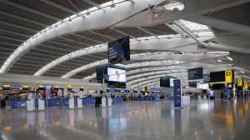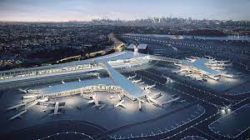There are many hundreds of major international airports across the globe, not to mention the smaller airfields that serve national travel and hard to reach communities. The world is now much smaller than it once was and airport terminal buildings all have certain features in common.

Expansion
Due to the truly global nature of today’s business world, international travel is still high on the agenda, especially now as economies bounce back after the Covid 19 pandemic. Traveller numbers are growing once more, so airports that need to expand must consider how to comfortably accommodate their passengers in transit, the baggage loads, number of available aircraft, associated services and the necessary infrastructure for keeping a busy airport running efficiently. In addition, all airport buildings must meet strict aviation industry safety guidelines.
This kind of expansion costs money, but increasing use of economic and eco-friendly materials is being witnessed. Tensile structures are commonly seen in modern airport design, and provide an economic and effective solution. Such structures can be erected at speed and the materials used protect against the elements, whether it’s snow or desert heat.
This type of architecture is durable and can be kept as either permanent or temporary structures. They are energy efficient, quick to erect and easily transferable between sites, as there is minimal steel skeleton. As modular designs, they can be continually amended and improved.

Safety
Security of passenger luggage is another major consideration for airport staff. From the moment bags leave you at check in to the unloading of cargo at the destination, passengers want the peace of mind that their possessions are safe. Many travel companies now use Security Seal devices on the baggage compartment. This contains a serial number that can be checked on arrival to ensure there has been no tampering. Find out more with Security seals from Acme Seals
Smart design
Smart building and technology systems are increasingly being applied to the design of 21st century airports. Building information technology, which minimises errors in the build process, and technological improvements in the development of fabric architecture will ensure a brave new world for the future of airport design.
Parking
As passengers commute to and from airports, most must provide adequate provision for a large number of vehicles, whether it’s for short or long term parking. This also requires the right infrastructure in regards to roads, drop off zones, taxi ranks and car hire companies.
